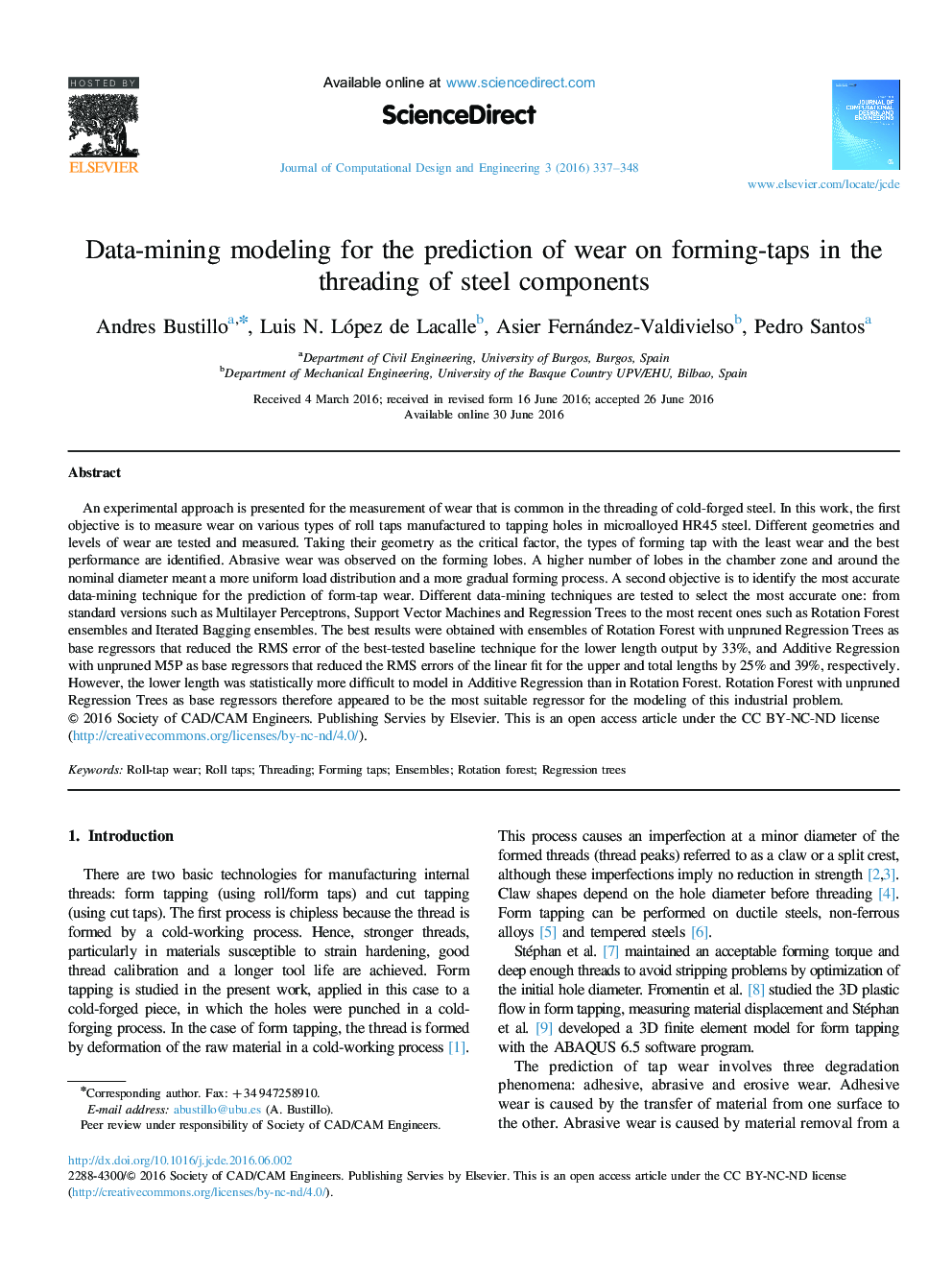| Article ID | Journal | Published Year | Pages | File Type |
|---|---|---|---|---|
| 4952974 | Journal of Computational Design and Engineering | 2016 | 12 Pages |
â¢Analysis of the shape and geometry of the best roll taps for cold forged Steel, concluding useful features.â¢Study of influence of metal forming in the close area to thread made by roll tapping.â¢Careful study of worn areas on forming edges.â¢A new study about a not very well-known threading process.â¢A data mining approach for the best modelling of experimental results.
An experimental approach is presented for the measurement of wear that is common in the threading of cold-forged steel. In this work, the first objective is to measure wear on various types of roll taps manufactured to tapping holes in microalloyed HR45 steel. Different geometries and levels of wear are tested and measured. Taking their geometry as the critical factor, the types of forming tap with the least wear and the best performance are identified. Abrasive wear was observed on the forming lobes. A higher number of lobes in the chamber zone and around the nominal diameter meant a more uniform load distribution and a more gradual forming process. A second objective is to identify the most accurate data-mining technique for the prediction of form-tap wear. Different data-mining techniques are tested to select the most accurate one: from standard versions such as Multilayer Perceptrons, Support Vector Machines and Regression Trees to the most recent ones such as Rotation Forest ensembles and Iterated Bagging ensembles. The best results were obtained with ensembles of Rotation Forest with unpruned Regression Trees as base regressors that reduced the RMS error of the best-tested baseline technique for the lower length output by 33%, and Additive Regression with unpruned M5P as base regressors that reduced the RMS errors of the linear fit for the upper and total lengths by 25% and 39%, respectively. However, the lower length was statistically more difficult to model in Additive Regression than in Rotation Forest. Rotation Forest with unpruned Regression Trees as base regressors therefore appeared to be the most suitable regressor for the modeling of this industrial problem.
Graphical abstractDownload full-size image
